
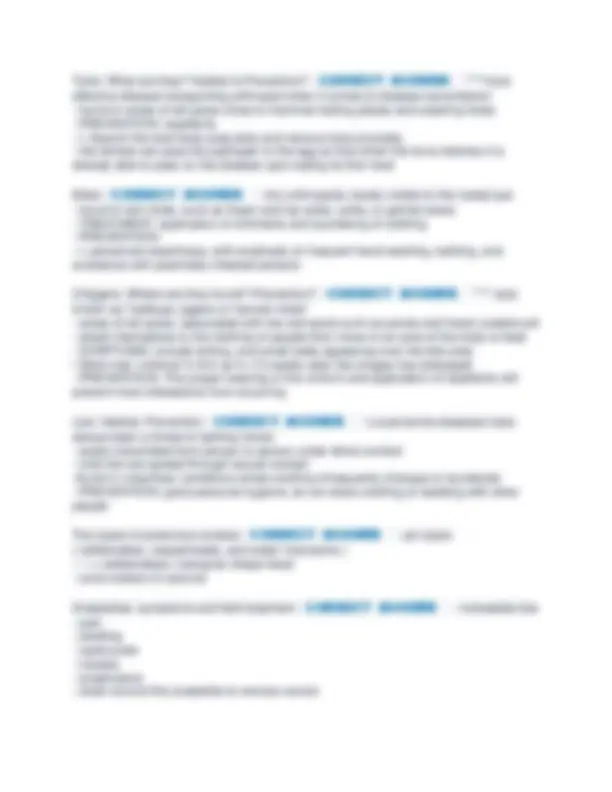
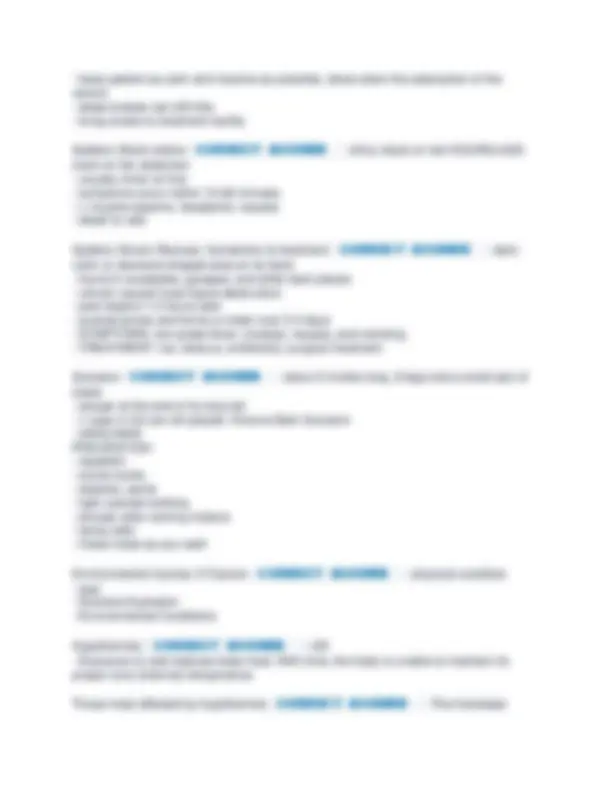
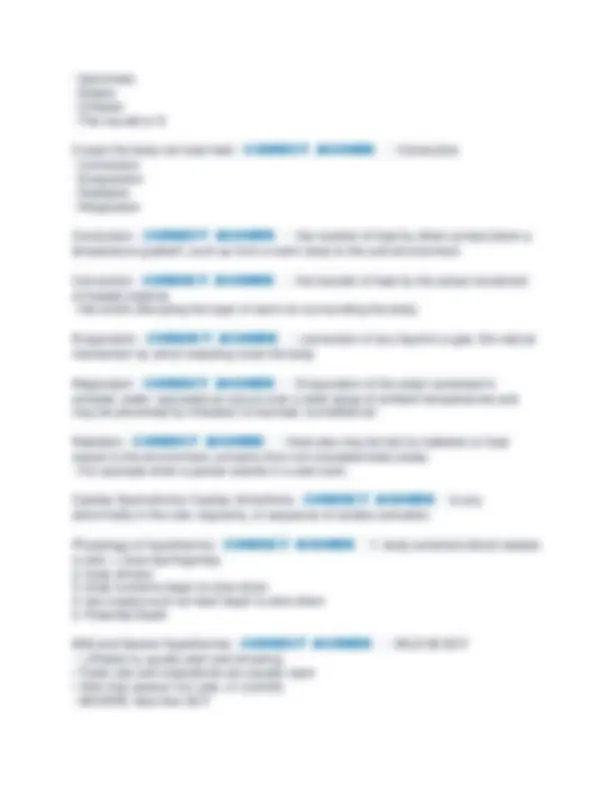
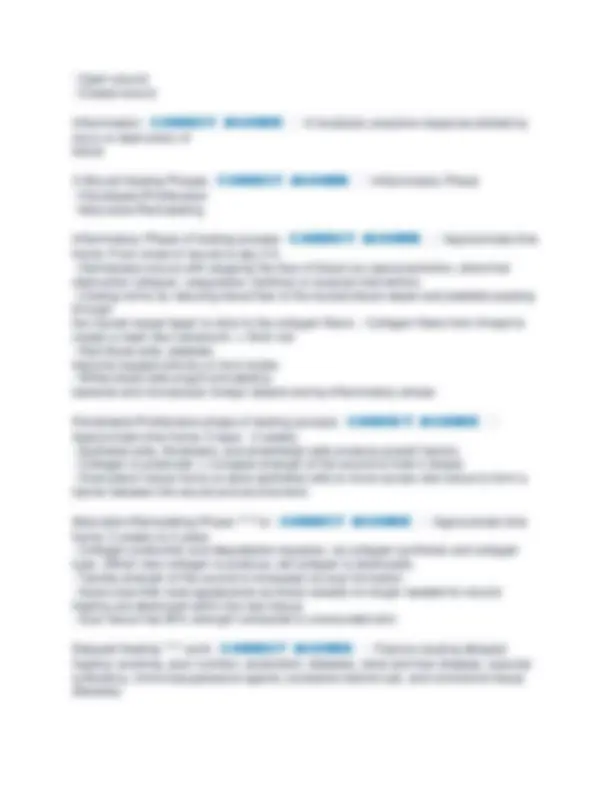
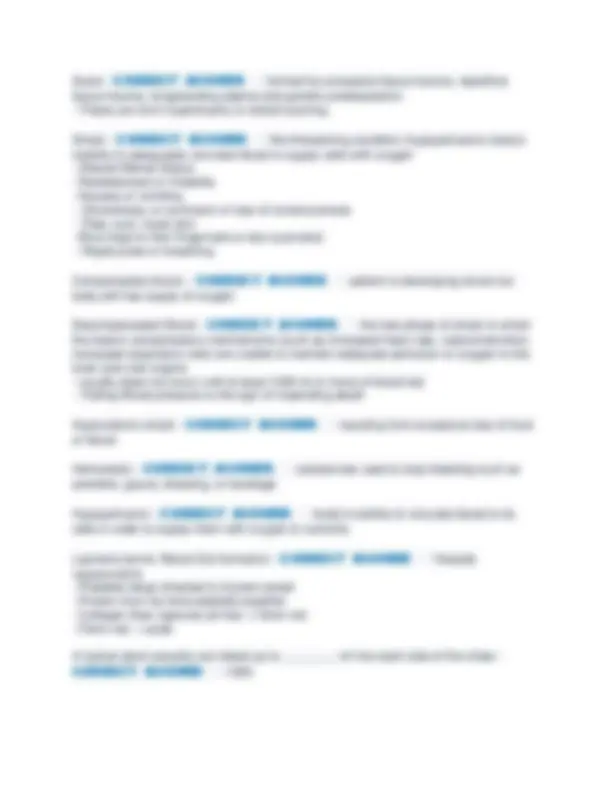
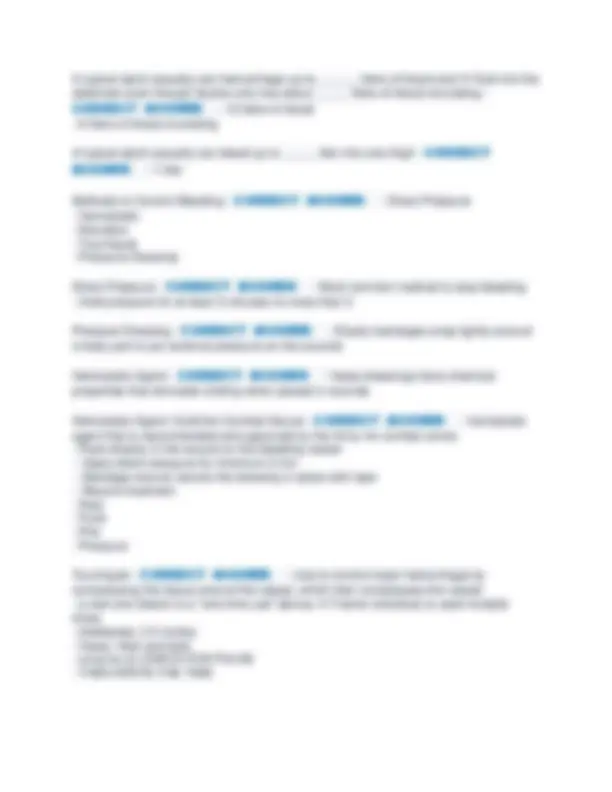



Study with the several resources on Docsity

Earn points by helping other students or get them with a premium plan


Prepare for your exams
Study with the several resources on Docsity

Earn points to download
Earn points by helping other students or get them with a premium plan
Community
Ask the community for help and clear up your study doubts
Discover the best universities in your country according to Docsity users
Free resources
Download our free guides on studying techniques, anxiety management strategies, and thesis advice from Docsity tutors
IBAM TEST 3 ACTUAL EXAM] LATEST VERSION [98 QUESTIONS AND ANSWERS] WITH STUDY GUIDE DETAILED AND VERIFIED FOR GUARANTEED PASS- LATEST UPDATE 2025 GRADED A
Typology: Exams
1 / 13

This page cannot be seen from the preview
Don't miss anything!








Vector - CORRECT ANSWER - a carrier.
Fecal Contamination - CORRECT ANSWER - the vector defecates into a wound on the host. As the wound itches, scratching and rubbing by the host causes the pathogen to enter the host's body
Heat Exhaustion & Symptoms - CORRECT ANSWER ****Most common serious illness caused by heat
A typical adult casualty can hemorrhage up to ______ liters of blood and IV fluid into the abdomen even though he/she only has about _____ liters of blood circulating - CORRECT ANSWER - 10 liters of blood
Internal Bleeding - CORRECT ANSWER - can result in severe blood loss with resultant shock (hypoperfusion) and subsequent death
C-17 Globemaster - CORRECT ANSWER - standard configuration of 36 Litter and 54 ambulatory. Saddleback Carry - CORRECT ANSWER - only for conscious people Two Handed Seated carry - CORRECT ANSWER - both conscious and unconscious